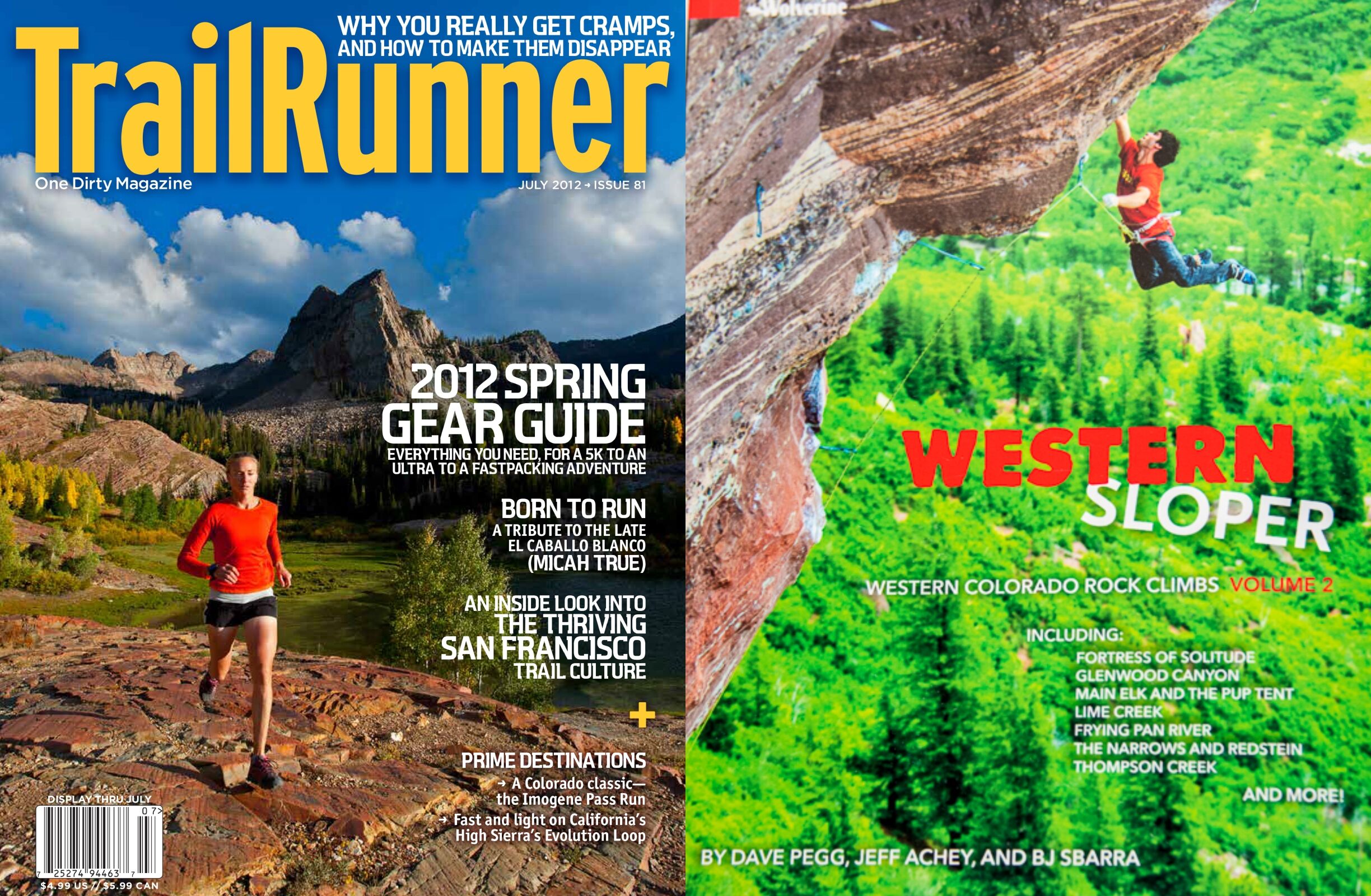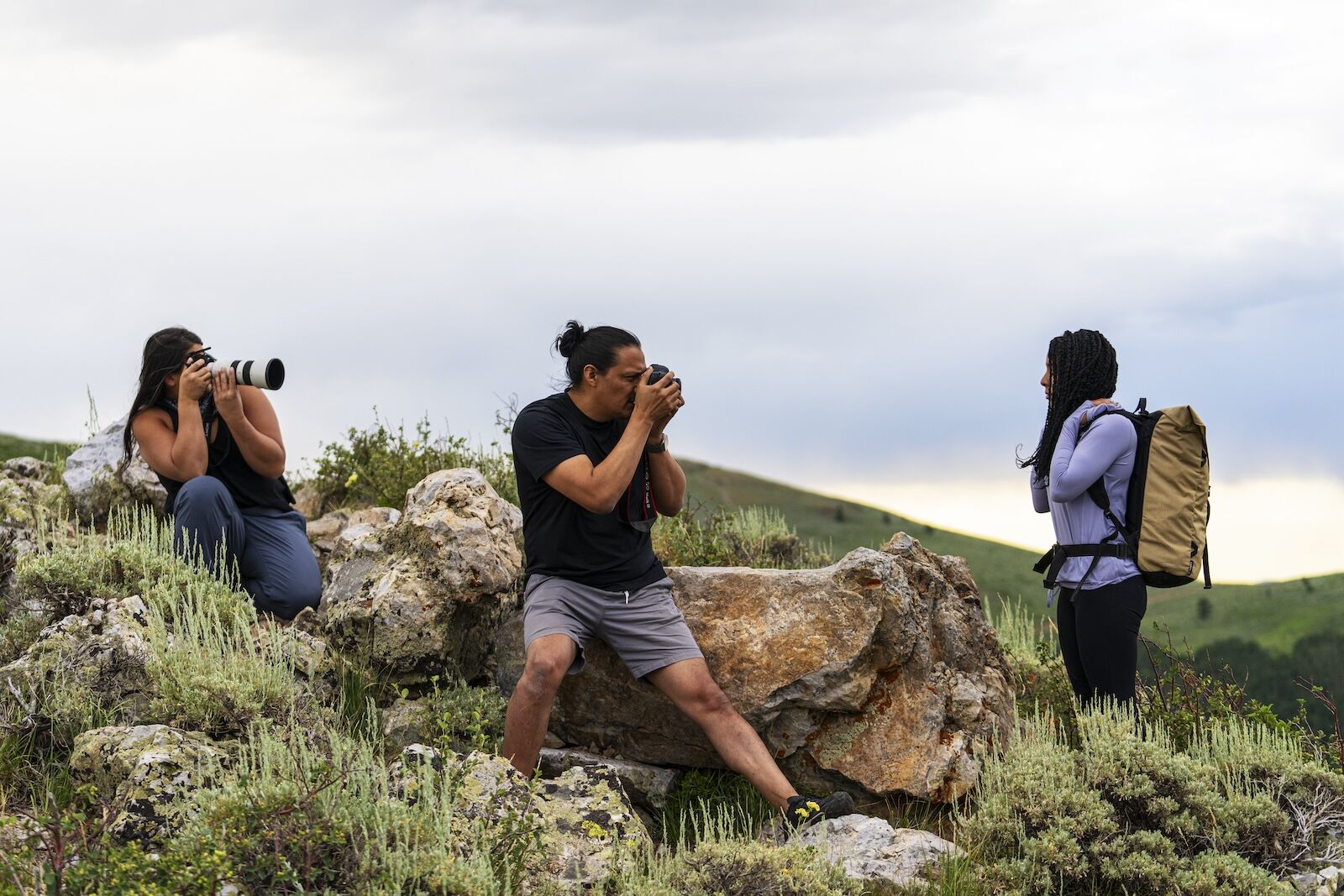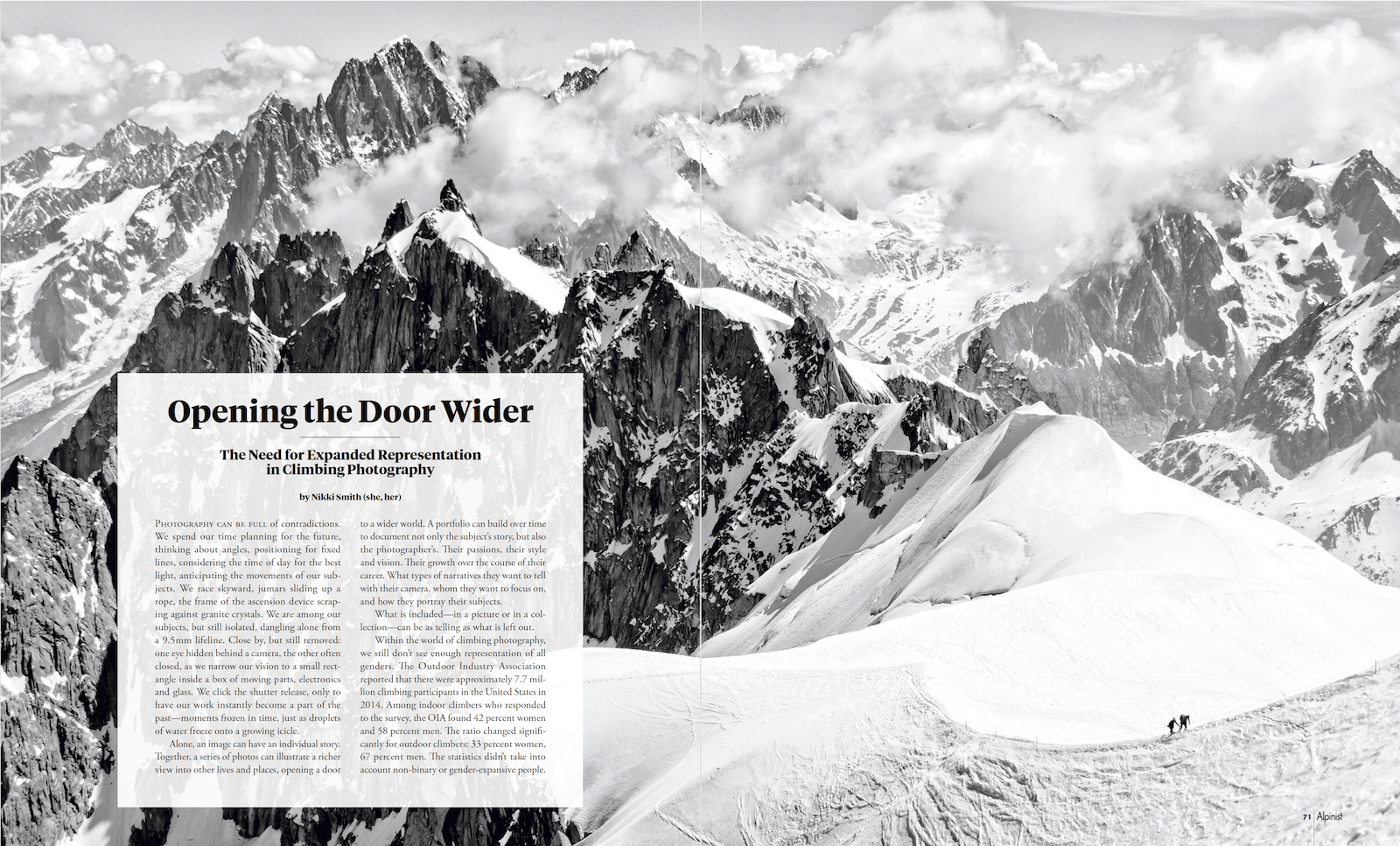Utah resident Nikki Smith is known for a lot of things. She’s an accomplished action sports and outdoor photographer, with photographs published everywhere from Outside Magazine to homepages for global brands like Mountain Hardware, Black Diamond, The North Face, and more. She’s authored several trail and rock climbing guides, is a sponsored athlete or ambassador with well-known organizations and brands like Scarpa, Brooks Running, and Jeremy Jones-founded POW (Protect Our Winters). She’s also a US Army veteran, a business owner, and a partner to outdoor brands, working to design and develop more inclusive technical clothing and gear.


Getting Into Action Sports Photography: Diversity, Climbing, and Landing Gigs With Nikki Smith
In 2019, she founded Open Aperture, an annual photography clinic designed to help underrepresented groups get more opportunities in front of and behind the camera in the outdoor world. She’s also a member of the LGBTQIA+ community, having come out publicly as a trans woman in 2018. The lack of representation in the outdoor industry is part of what motivated her decision to come out publicly as a trans woman, but it’s her skill as an artist, rock and ice climber, and photographer that pays the bills – and keeps her busy, traveling around the country for speaking engagements, teaching classes, working with brands, or just scouting new routes she’s hoping to include her next climbing book.
Matador Network jumped on a call with Smith to talk about her advocacy work, how she turned her photography skill into a career, why diversity matters in the outdoor industry, and how she became a world-class climber, despite being afraid of heights.
This interview has been edited for length and clarity.
Matador Network: Let’s start with a question that’s open ended on purpose: Tell me about you.
Smith: I would say I’m an artist and educator. I do photography, illustrations, graphic design, painting, all these kinds of things that fall under that. And then the educator part is I teach as much of that as possible. I’ve been a climbing guide since the late 1990s, and through guidebooks, the work that I do at events, taking people out into nature – that’s trying to share the passions that I have with everyone else.
But really, I have a lot of different jobs – I still can’t fully survive on photography alone. Climbing photography is one of the lower paying outdoor genres of photography, so a lot of us have to do additional things. I write climbing guidebooks, and pretty much constantly between guidebooks, I’m working on next editions. So I’m constantly researching, even when I’m climbing for myself. I constantly try to pick areas I didn’t know as well. I may go for a long run into a new basin in the mountains because I’m looking for new ascents, or looking up and seeing if I think ice might form in a certain place.
How did you get into climbing and photography, and how did you start combining the two?
I was 16 when I first started climbing. I had rappelled before and hated it – I’m afraid of heights. But I got invited to climb with some other teens and I didn’t want to be the one to say no. As soon as I tied in and climbed the route, everything went quiet. My mind stopped – stopped having to deal with everything I dealt with growing up, like not knowing who I was, or the fact that my father died when I was 14. There was this sense of freedom. It was just so powerful and meaningful. I had done all these other outdoorsy activities, but nothing hit me like that.
My father was an amateur photographer, and I used to do a lot of crafts with my mom – cross-stitching and painting and whatnot. But they were worried about me doing too many ‘feminine things,’ so I started spending time with my dad. So I always had a camera around.
During college, I started trying to do more with climbing photography, but I cared more about actually climbing. But I was bouldering one day and midway up a problem, I heard a super loud ‘pop:’ I blew two joints on both fingers, so I couldn’t climb for months. But I wanted to keep going out with my friends, so I decided to really focus on the photography side.

Magazine covers with photography shot by Smith. Photo: Nikki Smith
And then how did you turn those passions into a career?
I started submitting mostly to magazines at first. It seemed like in order to get stuff into the companies, you had to have a name from a magazine. And while I was in college, I was working for a climbing gym, teaching and working the front desk. And then I started guiding and building my connections, and I got a job at a climbing company. And then they started using my photography sometimes in the catalog, and eventually, I became the photographer for all the products and action photos. I was also doing freelance work at the same time, and quickly learned from working at the company what the photo needs really are [for promotional photos] and how to meet that need for a brand.
What was the catalyst for coming out publicly as transgender?
I knew I was already sponsored before that. I was known in the climbing world, I’d written five guidebooks and photos used by climbing brands and magazines out there. I knew I either had to leave climbing, or it was going to be visible. And part of it too was I’d never encountered anyone that was trans. I didn’t know that many queer climbers, and if I wanted any chance of changing that or finding them, I had to be visible. How that visibility came out wasn’t necessarily part of the plan. There were a lot of things that were kind of put on me and changed my role from what I thought I would do.
Climbing – I don’t think it is particularly better at representation. I hear over and over that climbing is one of the most accepting sports out there, and I think its made a lot of gains recently, and it’s one of the few sports we’ve been able to see much earlier, at least with outdoor ice climbing, that women are on the same level as men. We’re starting to see that gap shortening in other sports, but it’s not as apparent as climbing. And that’s helped it progress a little more quickly – and access to gyms in large population centers, that’s all helped.
h, so were you worried it could hurt your sponsorships or future work/business?
Early on, for sure, and now potentially, too. Since the issues with Bud Light and the trans influencer last year, and all the anti-DEI stuff, a lot of folks from marginalized backgrounds and the outdoors and other areas, a lot of folks have not been as visible.
Tell us about Open Aperture. What is it, and why is it important?
I was being asked at a lot of festivals and in general to teach climbing photography, but it was typically just a one-day course. I wanted to do something bigger, but I wanted to do something to create a mentorship for folks I didn’t see out there talking photos. So I went to Mountain Hardwear and pitched this idea, and we were able to work out the Open Aperture program.
There are six scholarships each year, and we’re not just reaching out to well-established photographers, but open to a wide range of skill levels. We typically have two that are really great photographers who haven’t done climbing photography or don’t know how to move up and down a fixed line or get the angles. It’s different from how you shoot other sports to really tell the story. Then we have some that are really new, but you can see in their work this innate artistic ability.
We do classroom and field workshops, and we go over framing and storytelling and creativity, and we bring in an editor from a magazine from a particular sport so they can have a class on how to put together an editorial submission. What are brands looking for in a photography submission? How to do a pitch deck.
And like anything in the outdoors, it’s also a marketing expense for Mountain Hardware, but we don’t want the participants to think Mountain Hardwear owns their photos or anything. If we use their photos in promoting the program, that’s part of being in the program, but if it’s used for a specific product, we make sure they get paid. It really helps their portfolio and for some of them, Mountain Hardware is their first client.
And then there’s ongoing mentorship for the first three months or so, but as folks need things, they’re reaching out. Typically, each cohort has maintained contact with one another.
(Editor’s note: Applications for the April 2025 Open Aperture clinic close November 8, 2024)

Shooting at a recent Open Aperture clinic. Photo: Nikki Smith
Why do we need more diversity in front of and behind the camera?
When you look at the make up of outdoor recreation, more than 30 percent of participants in outdoor recreation are not white. There’s a massive increase for climbing – it’s almost 50-50 women-vs-men in gym climbing. Outside, it’s more 60/40, but that number continues to grow. The number of queer folks within the outdoors continues to grow, and so we’re seeing this major visible shift in participation, but we’re not seeing outdoor imagery and our websites and leadership of companies and athlete teams representing everyone out there.
For me, what I saw over and over was that there were issues – mistranslations of what it was I said because I was never interviewed with anyone with trans identities, and they would go into it with preconceived ideas of what stories should be. And I see brands send out requests saying “we need more photos of diversity,” but then I’d look at the list [of photographers], and it was the same list of straight white guys. And I think it’s the same with writing and videography and all these things.
Like, with Red Bull Rampage (editor’s note: an extreme freeride mountain bike event), they’re bringing in photographers who specialize in that type of photography. You wouldn’t bring an NYC fashion photographer – you want someone who specializes in that. So what I’m trying to do is get more folks out there who have some speciality, who have connections.
We still see over and over it’s the same handful of people in the outdoor industry from marginalized backgrounds who get written about over and over. And writing – it can be a lot easier for interviews when someone from an [underrepresented] community might already know a lot of things that I can spend half an interview trying to describe.

An essay penned by Smith on the importance of representation. Photo: Nikki Smith
You live in Utah and do a lot of ice climbing. How has climate change impacted your work?
I’ve been documenting ice climbing with photography and guidebooks since 2003, and I have photos of what’s going on with particular climbs where I return year after year after year. And I’ve seen a drastic difference.
One climb, the Great White Icicle above Salt Lake, first done in 1962 – it’s a very accessible Water/Ice 3, and until 2014 or 2015, that was always reliable. Often you would be able to start around Thanksgiving and be able to go until the end of March. But in 2014, it had like one week, and since then, it’s on and off. But it’s much more serious and dangerous if you climb it now because it doesn’t form consistently. The average temperature of the water coming down is just a little too hot.
I’m in Utah, where our industry’s slogan is “the greatest snow on Earth.” And it’s frustrating – I know people whose entire careers depend on snow and ice and healthy forests. And we have entire climbs that might never come back.